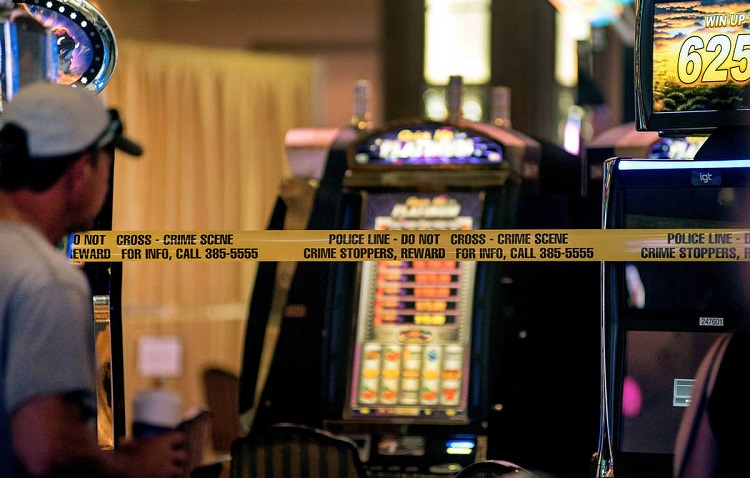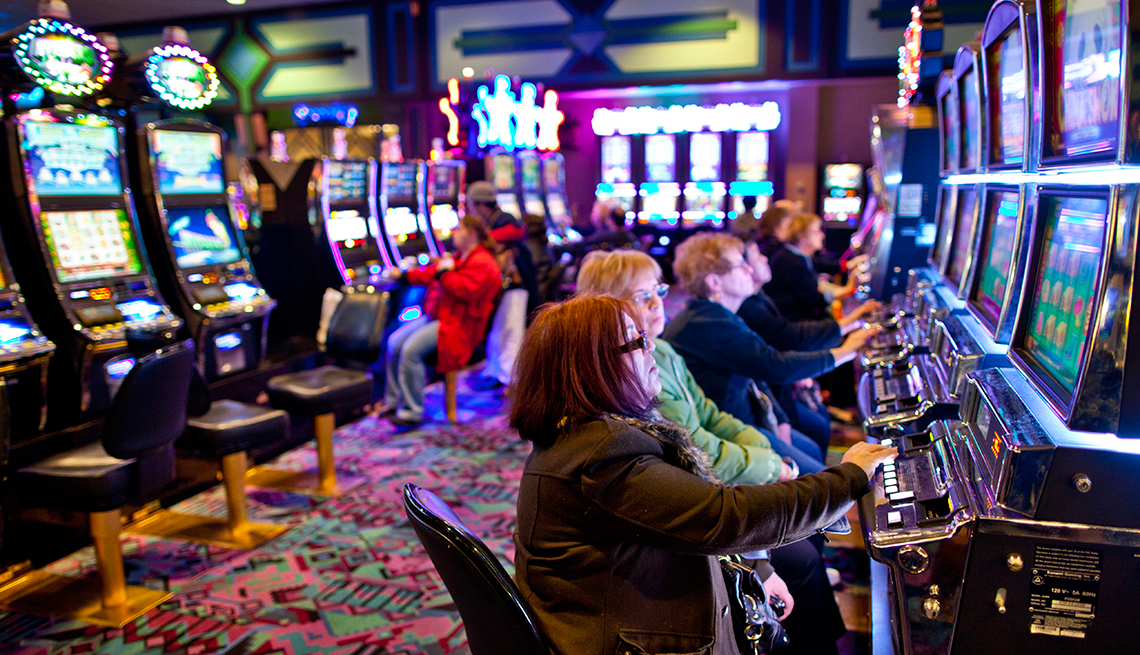Unraveling the Bogus Numbers
Florida’s most vocal casino opposition group tried to pull-off a major fast one on Wednesday, by holding a press conference to release a “study” they prepared that claims that casinos cause crime. Their media barrage was orchestrated to correspond with the last few days leading up to a potential vote on Friday by a committee of the Florida House of Representatives to move the destination resorts bill forward for the full House to consider. The big business supported “no casino” attack group paid for and directed the outcome of the “study” that was determined to prove casinos cause crime – even though there is no valid evidence to support such a notion. The lies are in the numbers.
What is most alarming about the “study” is that the information used to predict the crimes dates back to 1977. The most recent information the study uses in its crime statistics comes from 1996. There is no data later than 1996. The entire report is based on this old, irrelevant, out-dated information. The authors of the Florida Casino and Crime Report (Herring & Beggs), admit that almost their entire report is comprised from 1977 to 1996 data that they pulled from a 2006 (Grinols and Mustard) anti-casino gaming report, which has itself been widely criticized for it’s inaccuracies in the ways in which the data is calculated and the methodologies used. PHD Eric Walker, an associate professor of economics at the College of Charleston, who specialized in the economics and social affects of casinos, has written extensively about the many distortions and fallacies contained within the GM “study”.
Additionally, the “study” only accounts for a few states that had legalized gambling during those years. The usual way statistics lie is by selectively choosing only the data that would prove the case they want to make and to exclude data that would lead to a contrary finding. The study only names a few specific cities and states within its report; most likely in the areas where data was available to prove the anti-casino case. The author chose to leave out the names of some areas that were referred to in the study, so they are impossible to verify.
The report also excludes the numbers of visiting tourists in its population counts. This “numbers scheme” will artificially increasing the crime rates per capita by not counting people who are actually in the city at the time any crime might occur. The report purposefully excludes these people so that the crime rate would appear larger than actual.
Authors of the study (Herring & Beggs):
Richard Herring Is an independent “consultant,” hired by Disney’s “no casino” special interest group to show a link between crime and casinos. He was an appropriations attorney for the Florida Legislature. He now seems to be working as a stooge for the No casinos group.
David Beggs is an independent “consultant,” hired by Disney’s “no casino” group to also help show a link between casinos and crime. He was a “staff director” on a Florida Senate Committee in the past, as a paid staffer.
Both Herring and Beggs are Tallahassee insiders – part of the very crowd which has caused Florida’s increasing unemployment rate and huge budget deficit.
What experience do any of these people have in preparing an in depth research report?

The Herring and Biggs anti-casino report seems to be put together from nothing more than a simple google search. Any respectable economist would discount this report as nothing more than propaganda. It’s a loose patchwork of unrelated articles that rely on old and inaccurate data that has been criticized by many professional statisticians for its gross errors in sampling and for its lack of using traditional methodologies, one economist states: “the GM paper has serious errors and oversights, the effects of which may nullify the results of the paper. The problems include their measure of the crime rate, the lack of needed data, anomalies in their crime data, a poor measure of casino gambling activity, a potential sample bias, and a skewed interpretation of the empirical results.”
The authors admit that there are several valid ways to analyze the data – some of these “several valid ways” would produce contradictory results, but the author fails to provide this very important information. The truth is; they chose the methodology that provided the conclusions that they needed. The GM report also stated an increase in crime when there were actually decreases, but the GM report assumed that since crime was falling faster in non casino areas than it was falling in casino areas, that meant that crime was increasing around casinos and therefore casinos cause an increase in crime.
Errors of the Report:
* The data is old; dating back to 1977 and only including years up to 1996.
* The report excludes the numbers of visiting tourists in it’s population counts.
* The sample cities that were included in the study had an average population of only 145,000 people BUT Miami holds over 2.5 million residents.
* The report admits to excluding crimes that have NOT shown an increase.
* The report does not specify exactly what states or cities they include in their survey. The few examples they do mention include Atlantic City, Las Vegas and Des Moines, Iowa – from data that is almost two decades old. Crime has dropped in all those jurisdictions since 1996.
* The study does not compare the casinos on an apples to apples basis. The study make comparisons more on an apples to pears approach, where they include casinos in small rural areas that are not representative of urban Miami or the nearly $4 billion proposed destination resort facility. The comparison is not valid.
Important notations that were left out of the press conference:
* The report acknowledges that several studies on casinos and crime show that crime rates do not increase in areas that have casinos.
* The 3 billion dollar cost estimate for the incarceration of new criminals is mainly composed of inflated construction costs to buy property and build facilities.
* The report acknowledges that local law enforcement capacity is often improved in areas with new casinos, which decreases crime, The study found that more police presence decreases crime in that community due to an increased police presences.
* The study admits that the crime rate may drop after a casino opens.
* The report fails to provide details of what states had approved gaming when the studies were conducted back in 1996.
* The study states – “some research suggests that communities may be less concerned about crimes at casinos because the casinos pay for security and residents are not threatened in their streets or homes.”
* The “study” repeatedly sites a study by Grinols and Mustard which has been discredited.
* The author state that he “simply finds Grinols work to be more thorough and “persuasive” but acknowledges that other researchers like “Dr. Walker” criticize Grinols’ calculations and assumptions as “flawed.”
* Dr. Walker, the most vocal critic of Grinols and Mustard’s 2006 study, repeatedly stresses how crime statistics must include the tourist population to be accurate.
* The author of the “no casino” groups study makes a very strange comment within the report that states “we are fully aware that Grinols work has been criticized because he is a Christian.” How is this appropriate to mention in a research report? It’s inclusion seems out of place, and leads to questions like WHY?
* The report takes out the tourist population, in their equation, but includes the added number of crime incidents in a way to skew the results into appearing as if crime is increasing, when it is actually remaining the same or declining on a per capita basis. The only reliable and accurate way to measure crime rates is to include the entire population.
* The report only studied periods prior to 1996 – a period in time before the destination resorts philosophy was even considered in the United States and before adequate oversight and protections were thought through and applied to cities and states which began gaming operations after witnessing some of the oversights from the Atlantic City casinos and their regulators.
* The Gringols and Mustard study is vilified among statisticians for artificially increasing the crime rate, in the subject areas, through the manipulation of the data, specifically – the exclusion of the visitor population.
Small casinos in rural locations or ones that were built when and where looser restrictions were in place, did not invest in the infrastructure of the community in the way that the destination resorts in Florida have proposed, and will be required to provide. The government officials of N.J and Atlantic City did not regulate the industry properly or insure that there was adequate police presence and resources. Atlantic City has seen a decline in its tourist arrivals as a direct result of competition from other, more attractive states, that have operating casinos. When Foxwoods opened in Connecticut, Atlantic City saw a steep decline in visitors. Services were cut back and the area became blighted. What happened in Atlantic City was due to irresponsible governmental controls and lack of planning. Many of the negative issues that have been associated with gaming in the past have already been mitigated against through tougher laws and proper oversight.
Florida’s passage of destination resort casinos will surly impact other states and their ongoing casino operations. Conservative estimate indicate that Las Vegas could loose 20 – 30% of their business once the first destination resort opens in Florida. Most of the states that have approved gaming do not have much else going for them except the attraction of gaming. It would be difficult for any other state to compete with Florida’s attractiveness as a tourist destination if the resort casinos were approved.
Even considering a potential increase in crime; the casinos are well worth any limited potential risk Florida could be exposed to. Those issues can be reconciled through increased security, which the casinos are willing to pay for. Downtown Miami is a crime filled cesspool now. It is dangerous to walk further than two blocks West of Biscayne Boulevard. If casinos were approved, the entire downtown corridor will get cleaned-up and secured, finally allowing the new condominium residents to feel free enough to walk around their neighborhood in the evening, which is something that the locals would not be willing to do now. Contrary to the findings of Walt Disney and their cohorts; casinos reduce crime due to the jobs and prosperity they bring to a community – Miami residents agree.

